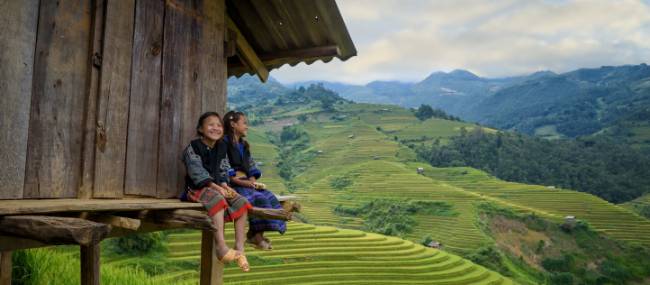
Friendly village children in Ha Giang, Vietnam
Regenerative Travel is a relatively new term in travel circles that aims to go beyond sustainable travel practices. While sustainable travel focuses on minimising negative impacts and returning a net neutrality on the environment and local communities, Regenerative Travel aims to have a positive and transformative effect on those environments and communities.
Put simply, the core principle of Regenerative Travel urges travellers to have a positive impact by giving back more than they take from the destinations they visit.
The term was born during the Covid pandemic, when locations typically overtouristed began to see improvements in key indicators like air quality, and less pollution.
The question was soon posed - how can these improvements continue when travellers return? How can a destination benefit yet still incentivise the protection of natural and cultural assets AND still provide an enriching experience for the traveller?
Enter, Regenerative Travel.
A Regenerative Travel program involves travellers committing to activities such as actively restoring and regenerating ecosystems, supporting local economies, engaging in community lead initiatives, fostering cultural exchange and reducing their carbon footprint.
The benefits of Regenerative Travel are seen on many levels. This type of 'slow travel' seeks to create a net positive cycle, where travellers and destinations mutually benefit from the experience, leaving a lasting positive impact on the environment, building capacities for local communities, and increasing respect for cultures encountered during the journey.
When travellers support locally driven initiatives and businesses, the communities receive the resources they require to care for and protect their environment.
The demand for this style of travel also drives the local communities to engage in activities supporting this regenerative approach, and the traveller, sharing more meaningful experiences during their journey, is more driven to respect and protect the land and local communities while travelling.



We have teamed up with a local NGO, T-HELP, to implement a service program and help train local female farmers in the techniques of vermicomposting. This is combined with a group trek through the Annapurna Range through small farming communities and villages, into the location of the service program, gaining an understanding of the local environment and terrain, as well as gaining incomparable views of the Annapurna and Dhaulagiri ranges.
Overall, Regenerative Travel offers travellers a unique opportunity to combine personal growth, cultural understanding, environmental stewardship, and community engagement. It empowers people to become responsible global citizens who actively contribute to a more sustainable and inclusive world.






